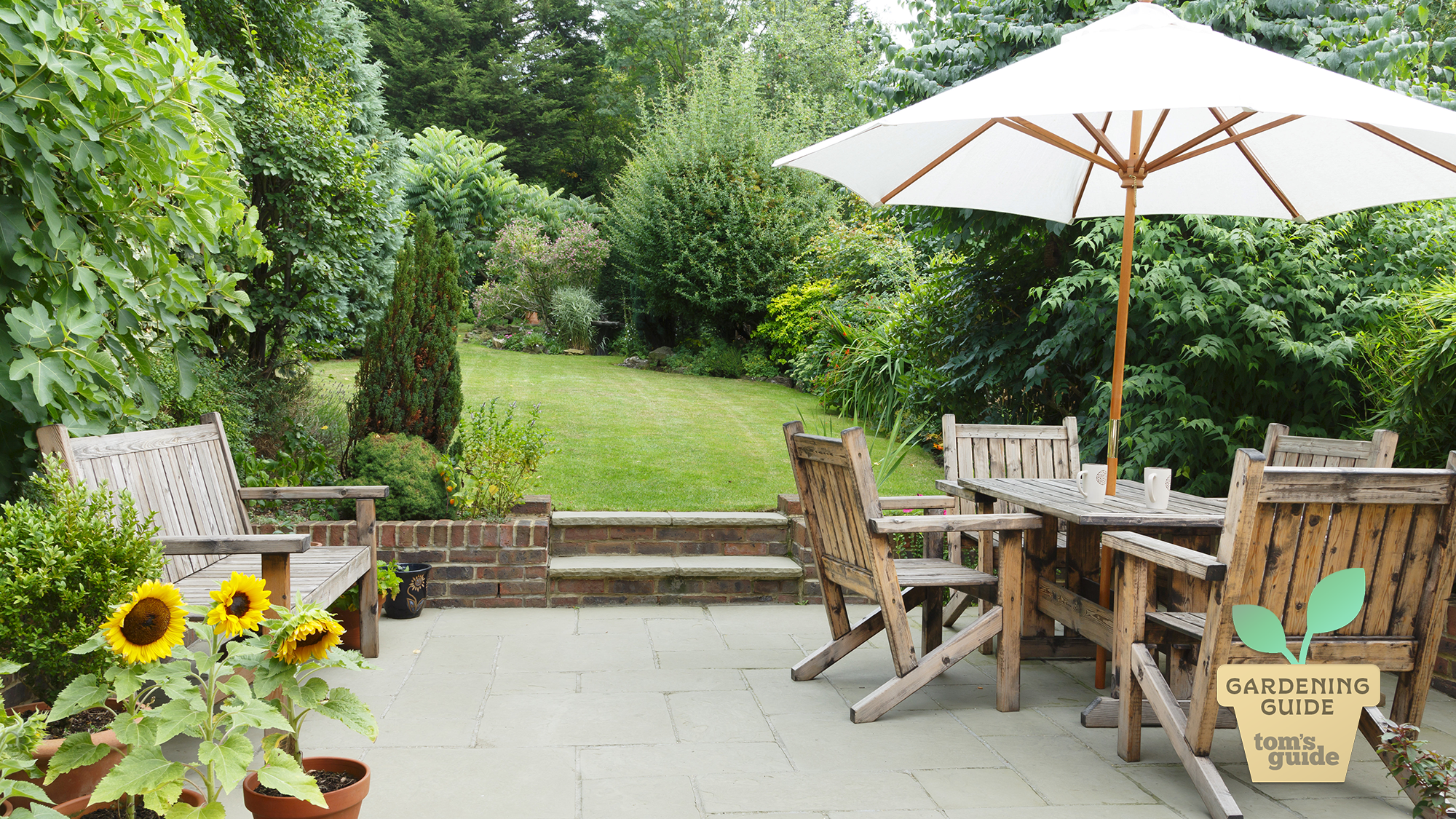7 best self-seeding plants for fresh growth every year
These plants will keep on blooming, year-on-year
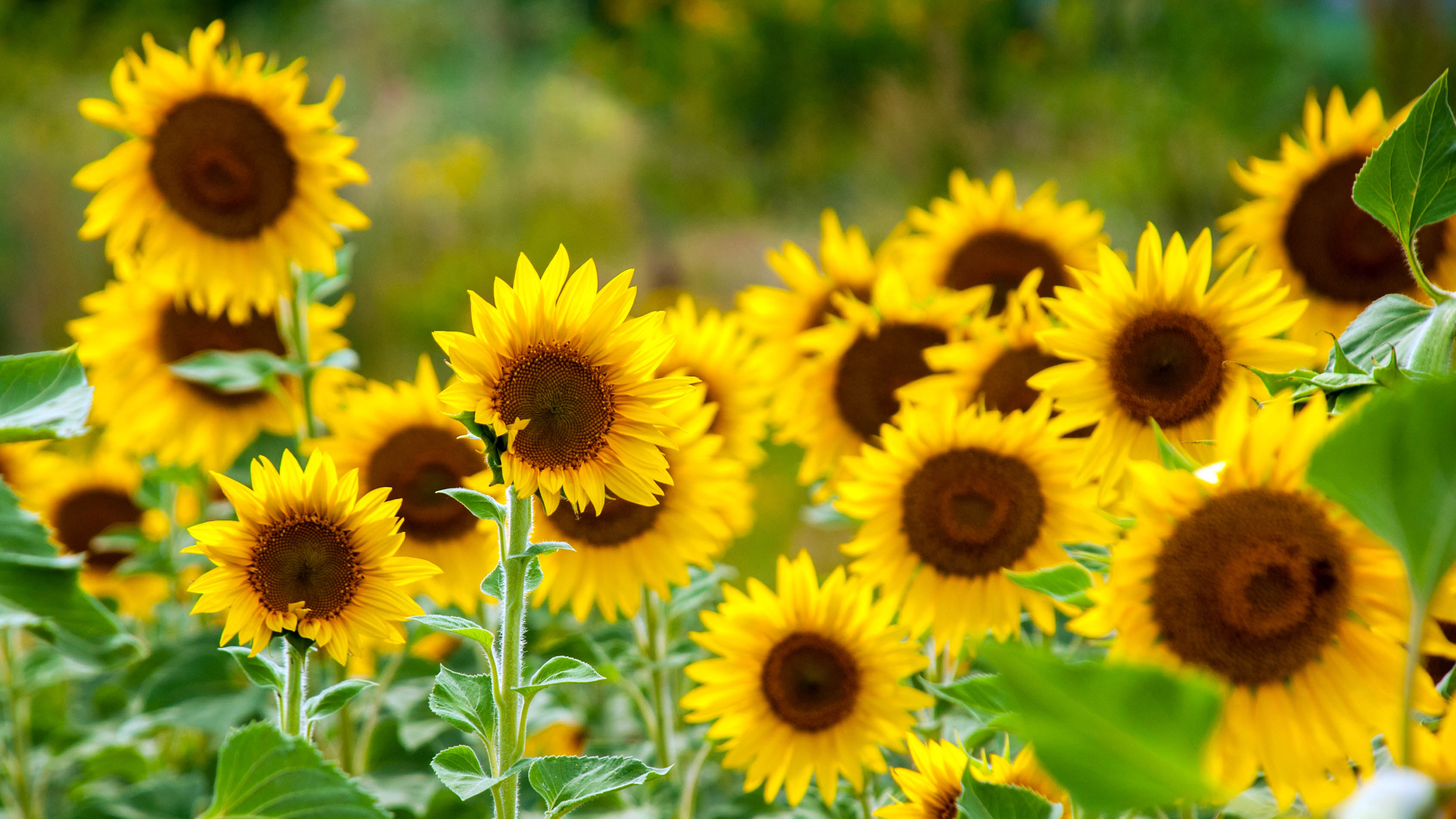
As the temperature continues to drop, our gardens can start to look lackluster to say the least. It’s only natural for flowers and foliage to die back as we approach winter, although we have found 9 best plants that grow back every year, which can survive the frost. Annuals, on the other hand, will unfortunately perish in the icy temperatures, leaving you with a bare patch of soil to fill in again come spring. This is time consuming, as well as expensive, so it’s not an ideal chore for all.
Luckily, there’s the option to choose plants that self-seed. These plants will develop seed heads before dying back, the results of which fall to the ground and produce fresh blooms the following year. It’s not as controlled a method as strategically placing your plants, but it’s certainly a more low-maintenance one which can lead to natural beauty.
And whether you’re planting annuals or perennials which self-seed, it gives you more flowers to display next season for free. As a bonus, you’re providing much-needed food for birds with these seeds, at a time when it can be scarce.
If you want to know what to plant to get the most out of your seeds, we’ve listed 7 of the best self-seeding plants here, although there’s so many to choose from that this was no easy feat.
If you’re dealing with windy conditions, be sure to also check out 7 best plants for surviving high winds.
Note: The following plants may be toxic to dogs, cats and humans. Always research what you're planning to grow and stay safe.
1. California poppy
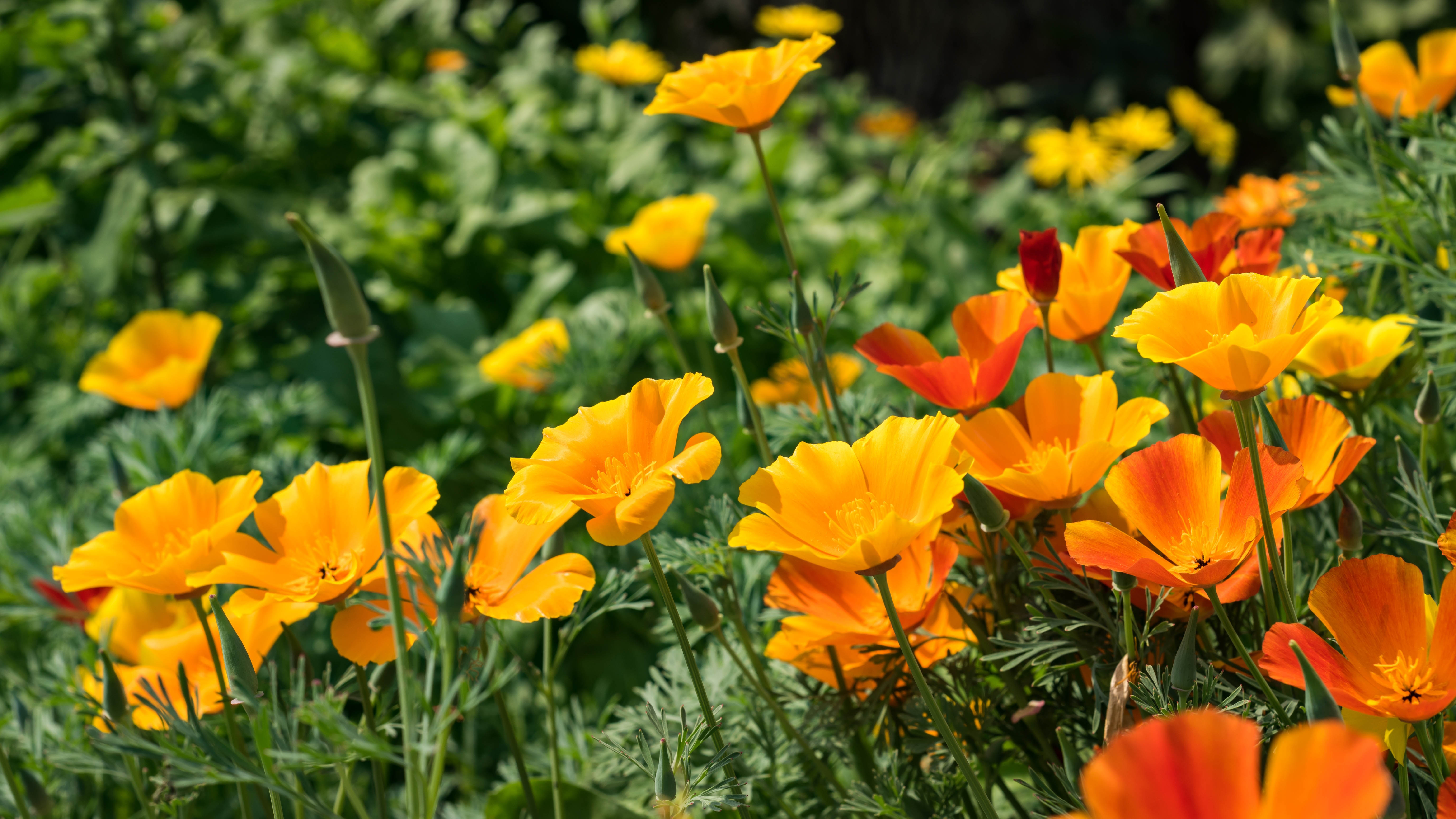
The first plant to make our list is the California poppy. When grown in bulk, these flowers can create a tremendous display — illuminating the space with orange and red tones. They’re technically short lived perennials, but tend to struggle in colder climates, and so can often be regarded and treated as annuals. Luckily these pretty additions will self-seed during the growing season, with fresh blooms popping up the following season.
Sign up to get the BEST of Tom's Guide direct to your inbox.
Get instant access to breaking news, the hottest reviews, great deals and helpful tips.
California poppies are best grown in USDA zones 6-10, blooming from around March to May. They generally prefer mild conditions, ranging from 50-75°F. They may go dormant through the winter and survive for several years, depending on how low temperatures drop, or they can be treated as annuals and continue to return from self-seeding alone. They’re fairly drought-tolerant and prefer full sun exposure. California poppies can become somewhat invasive, so keep its growth controlled.
2. Alpine forget-me-not
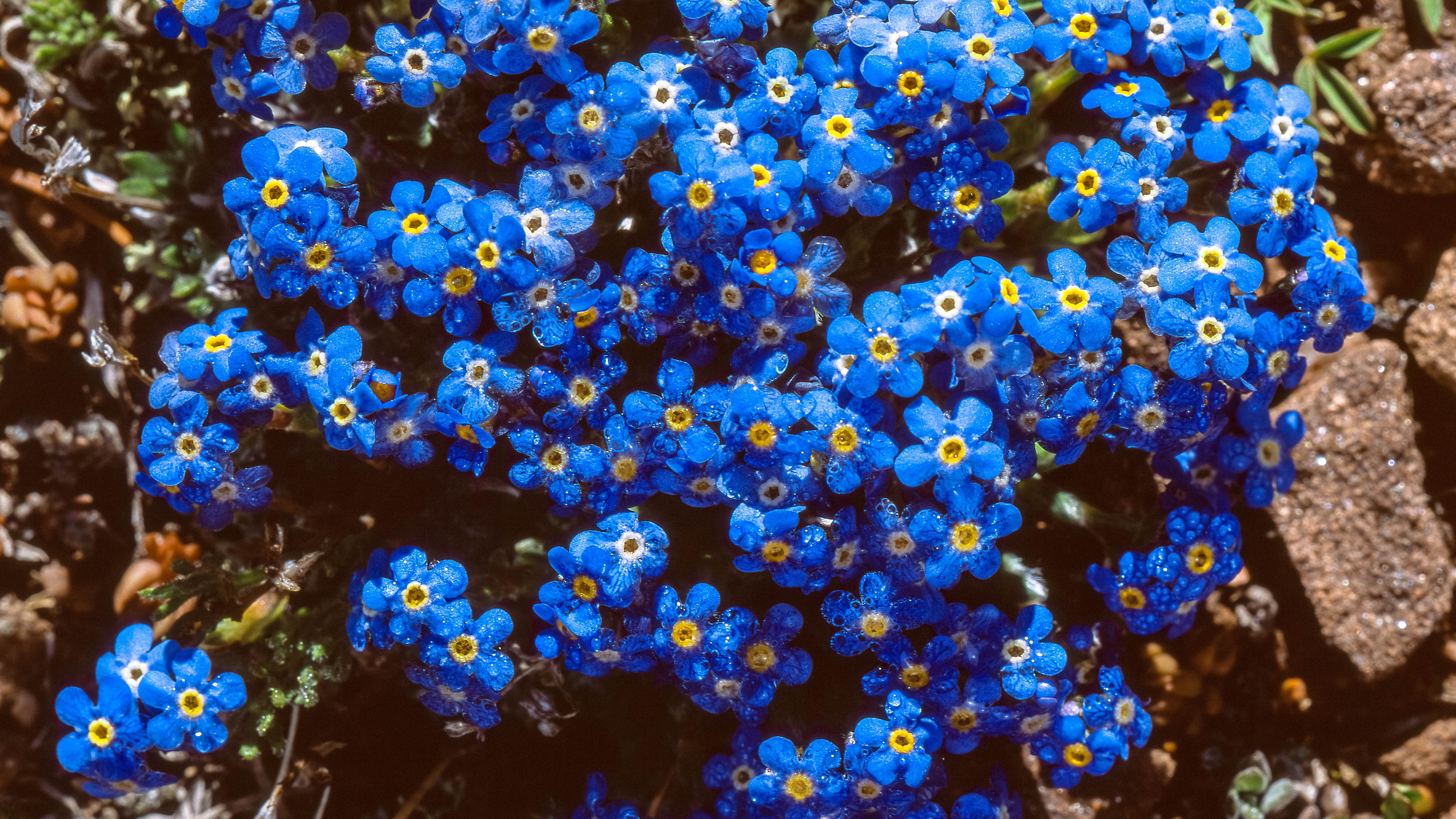
And who could forget about forget-me-nots? These small, but sweet flowers can add a splash of color as well as sentimentality to any yard. Each flowerhead features five blue petals and a yellow center. However, the name spans across multiple species of Myosotis plant, some of which are deemed invasive and aggressive, so care needs to be taken here. True forget-me-not in particular will spread rapidly and can pose a threat to the ecosystem, so keep this invasive variety in containers to prevent spreading. In some states, it's considered to be a noxious weed, and so it's growth is discouraged.
A friendly alternative you can grow is the Alpine forget-me-not (the state flower of Alaska). Suitable to USDA zones 4-8, this short-lived perennial prefers moist, well-drained soil conditions and full sun for best growth. It will self-seed regularly for ongoing flowers. If you choose to grow forget-me-nots, make sure you adhere to local rules — some varieties may be discouraged.
3. Sunflower
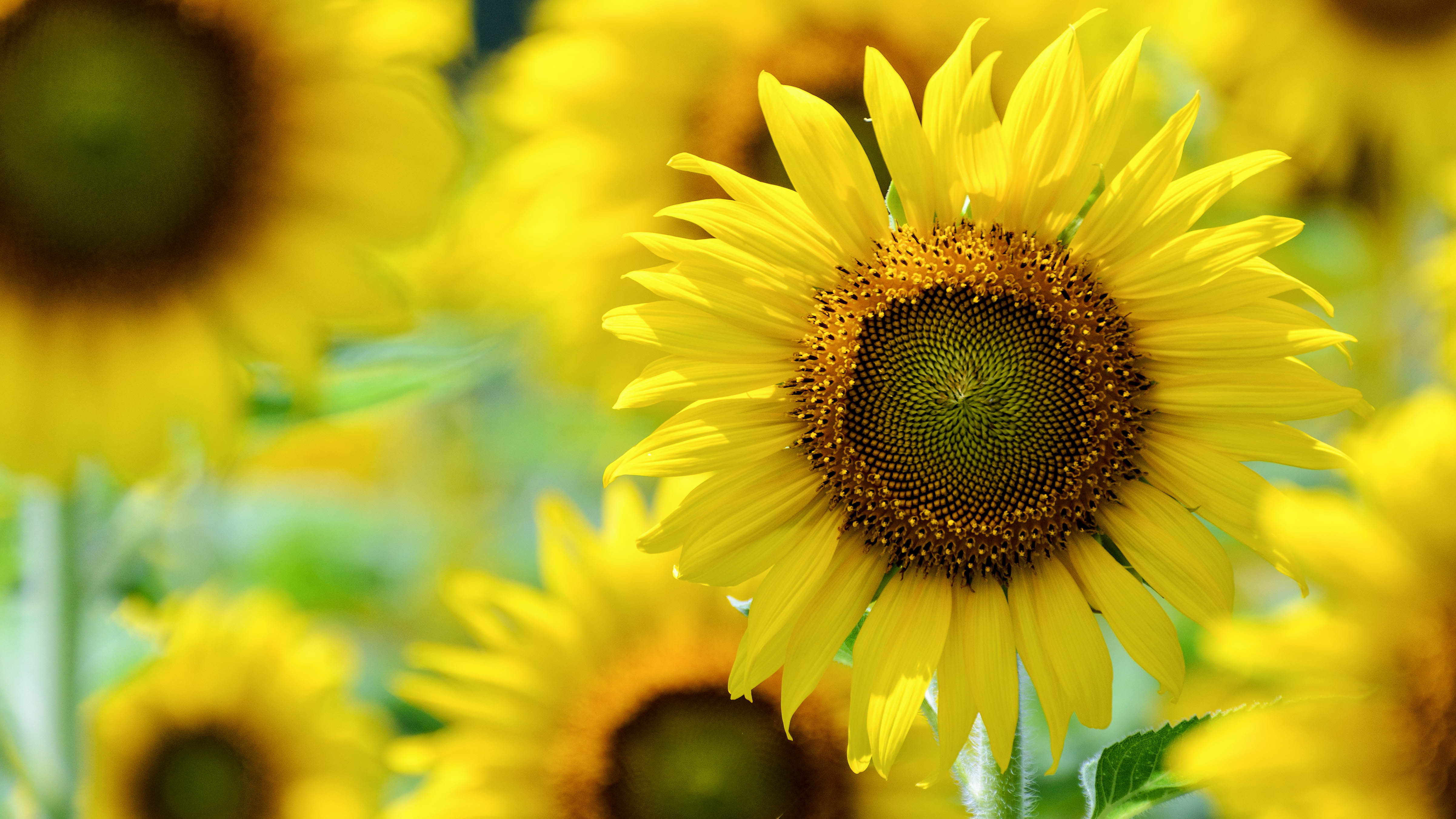
Sunflowers have an iconic appearance which can’t be mistaken. They typically feature yellow petals splaying from a fuzzy, seeded center which follows the sun throughout the day. These tall-growing plants can be either annuals or perennials depending on the variety. Reaching heights of up to 10 feet or more, taller varieties often require additional support. But they’re so easy to grow in the first place that these make for ideal plants to sow with kids. Here’s how to plant sunflower seeds and when to do it if you want guidance.
And if you love sunflowers, they self-seed too which is even better. Once the seeds mature, they fall to the ground, ready to germinate for fresh sunflowers next season. It’s a good thing there’s plenty of seeds too, as these are adored by a great many birds, and the flower itself will attract beneficial pollinators and insects too — so there’s little reason not to grow sunflowers.
Sunflowers grow best in USDA zones 2-11 in full sun with regular water. They're non-toxic to dogs and cats, which is a bonus.
4. Morning Glory
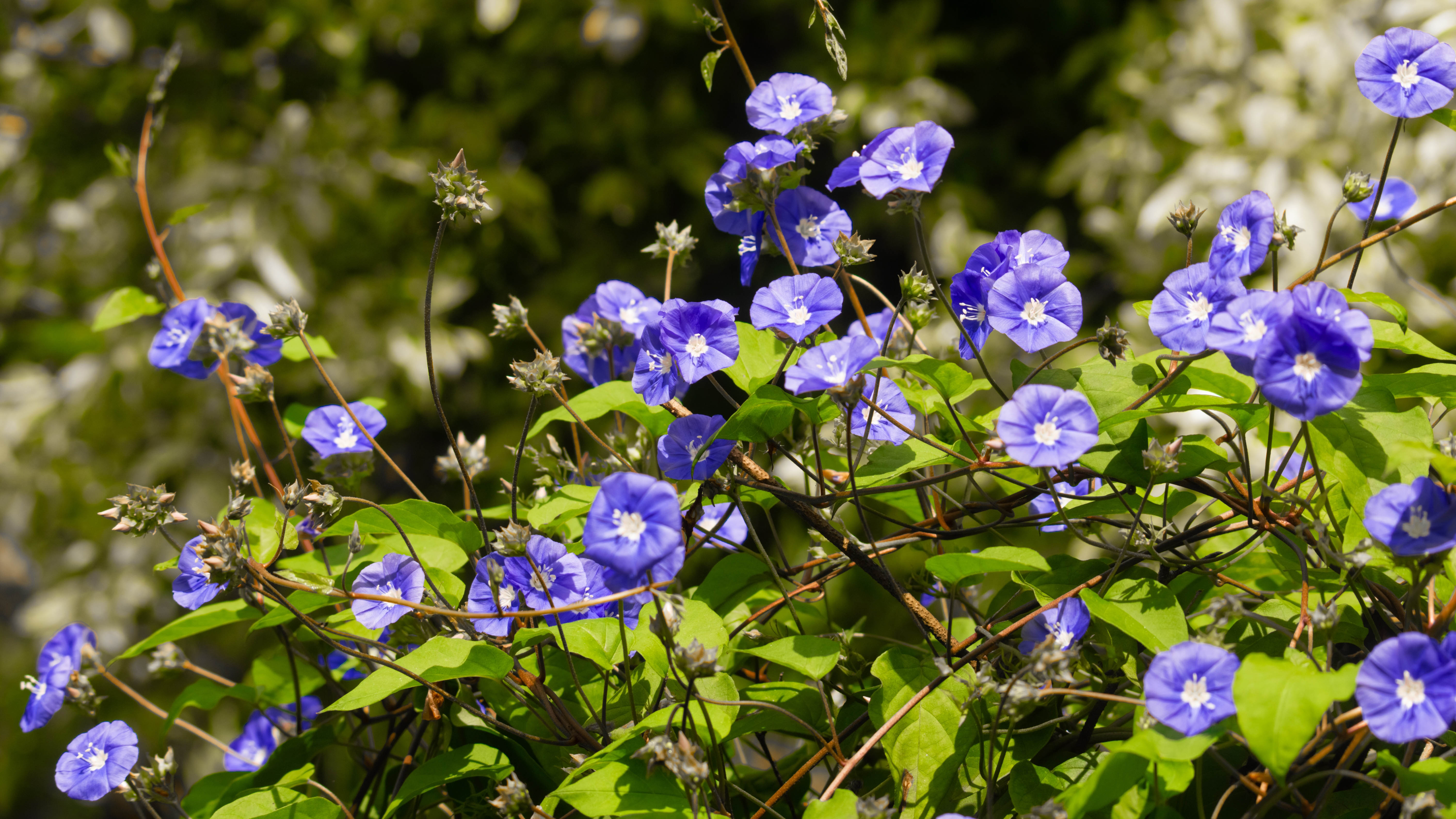
There’s more than 1,000 species of morning glory, but the typical plant is an annual vine which features trumpet-shaped flowers. Colors range widely, but tend to display shades of blue, purple, red, white or pink. The reason for its name is because these flowers unfurl with the morning sun, revealing their full beauty. There’s mixed opinions of these plants — on the one hand, they can be fast-growing and too aggressive for some, but on the flip side they’re also viewed as low-maintenance, with experiences varying depending on the species.
But, in any case, these plants will self-seed readily, giving you fresh morning glory seedlings the following season. So long as its growth is controlled, pruning back and deadheading with the best pruning shears if necessary, and you keep an eye on neighboring plants, this can be a rewarding plant to raise. Should seedlings be prolific, just remove what you need to while wearing a pair of the best gardening gloves.
Morning glory is hardy in USDA zones 2-11. Full sun is best for this plant. Keep in mind that it's toxic to dogs and cats though, so steer clear if you have pets.
5. Foxglove
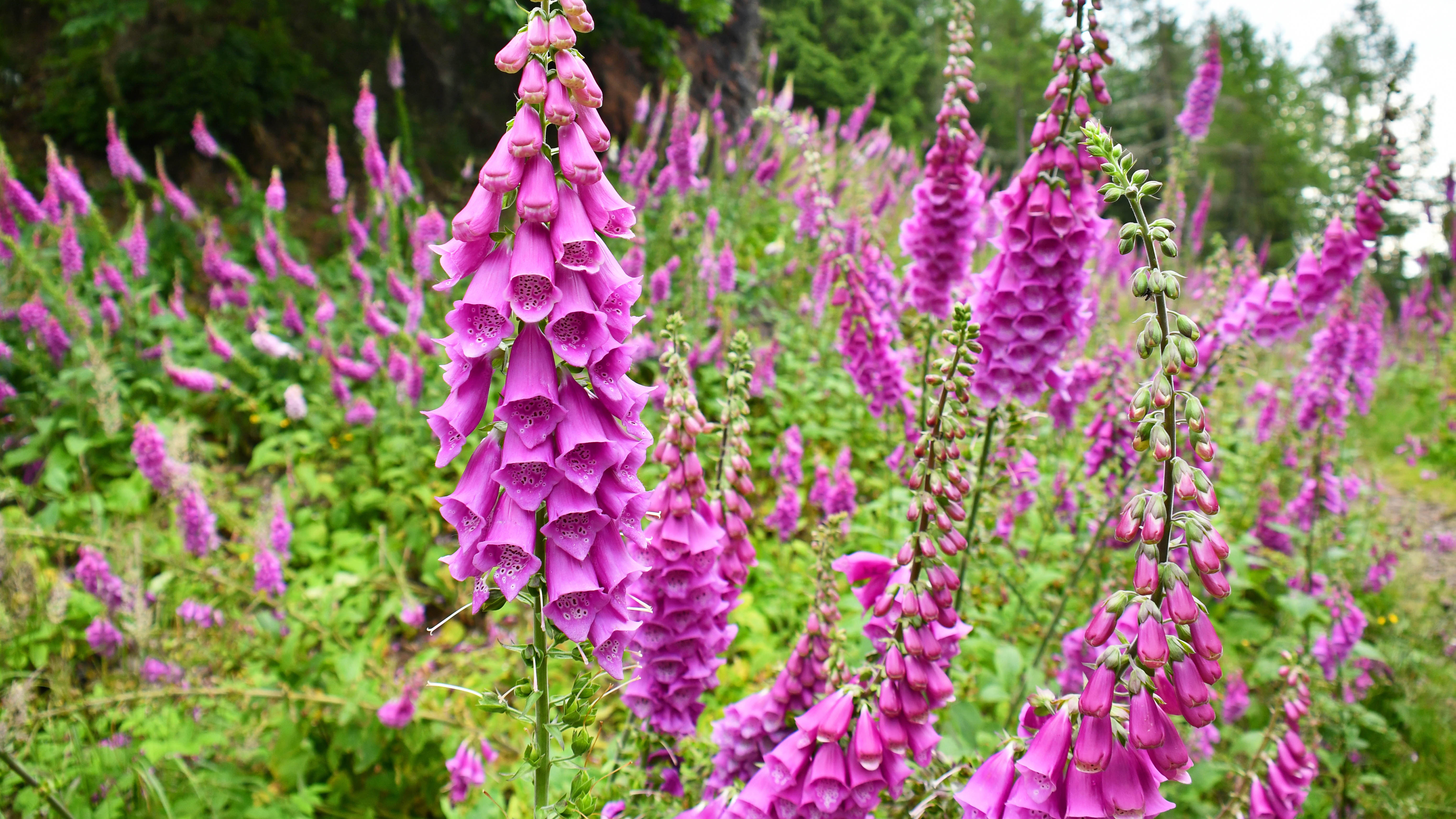
Foxglove features tall stems stacked with trumpet-shaped flowers, reaching up to six feet in height. These flowers attract both hummingbirds and butterflies, bringing additional wildlife to your yard, and with common blooming colors including purple, pink, red, yellow and white, there’s no end of color on offer here either. Foxgloves can be short lived perennials or biennial, but seeing as it self-seeds readily, it will remain established. In fact, it can drop so many seeds in such a focused area, that you may want to space them apart for adequate room to grow.
Foxgloves prefer moist, well-draining soil, without being overexposed which can lead to root rot. Full sun or partial shade works well for this plant too, thriving in cooler temperatures of around 70-90°F. It’s suitable for USDA zones 4-10. If you’d like to try growing foxglove in other areas of your yard, don’t forget that you can save the seeds from mature plants, rather than letting them fall to the immediate ground.
Foxglove is toxic to dogs, cats and humans, so take great care around this plant, and wear gloves whenever handling.
6. Cosmos
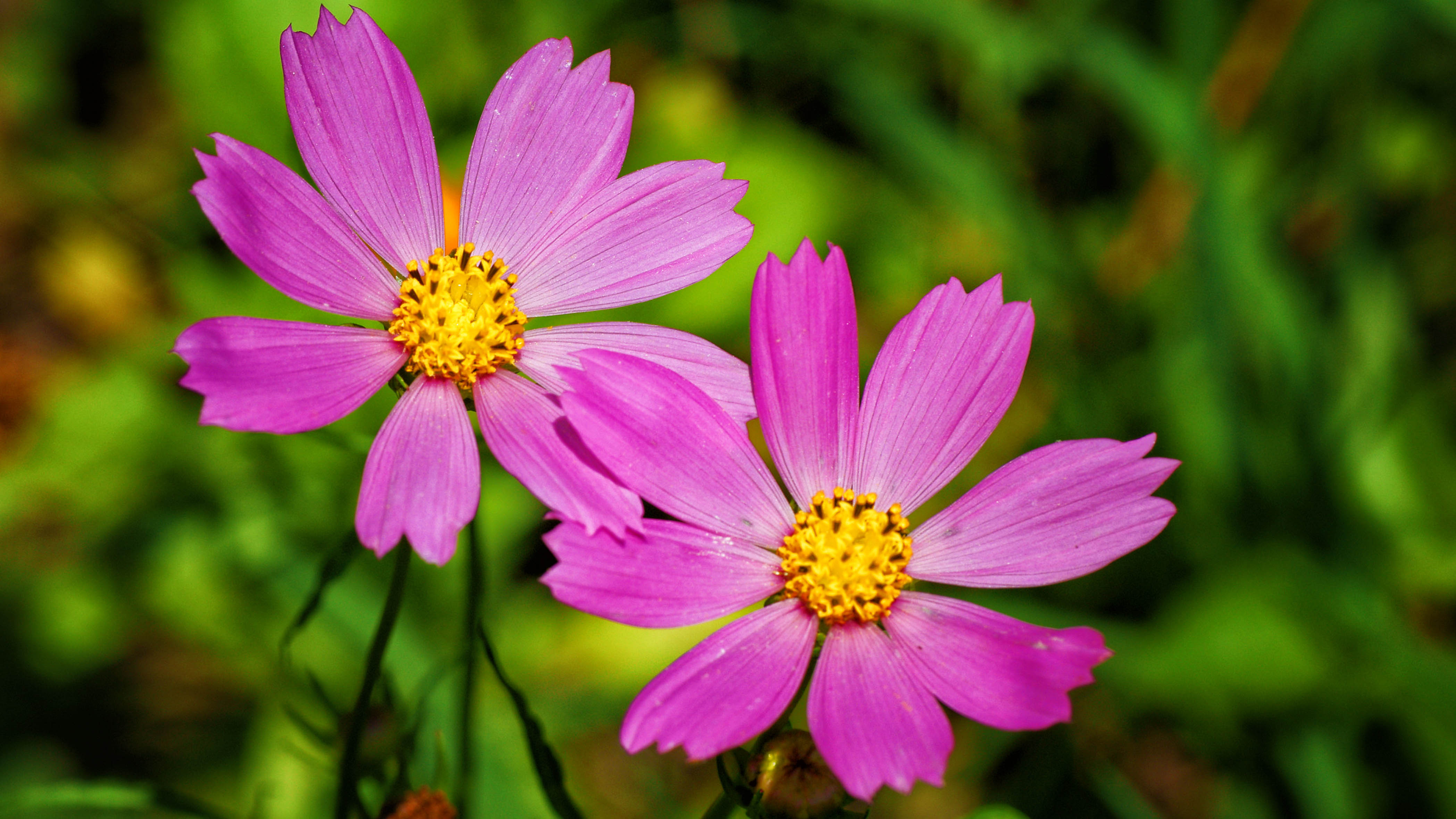
While cosmos may sound out of this world, they appear fairly typical in your yard, with a daisy-shaped flower formation. These come in a whole host of colors, with common species displaying pink, purple, white, red and yellow flowerheads. Cosmos are low-maintenance to grow and pretty hardy too, surviving a range of conditions — however, these annual flowers will only survive outside of the winter frost. Thankfully, they self-seed abundantly, so you can create a similar display once the temperatures pick up again.
Cosmos plants are hardy in USDA zones 2-11. As already mentioned, plants don’t come much easier to care for. Once mature, watering won’t be required unless you’re dealing with drought conditions. They’re also happy in hot temperatures with full sun. However, take care if you live in southern U.S states, as cosmos can be considered invasive in some regions. Check with local laws to make sure you’re not introducing a banned or discouraged species.
7. Rose campion
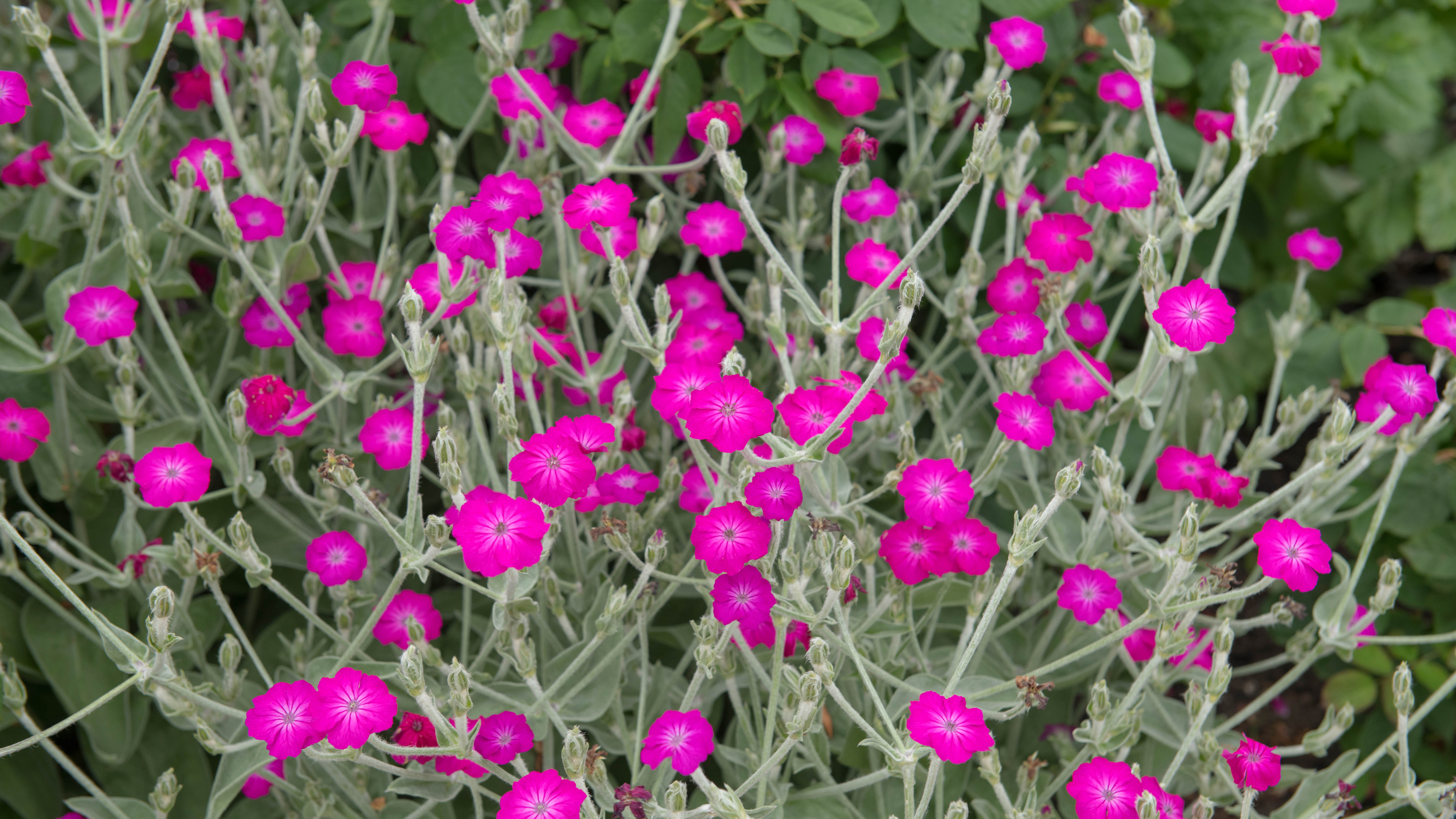
Rose campion produces delicate and sporadic flowers in pink, white and purple colorways. Also known as crown pink, rabbit’s ears and bloody William, this short lived perennial, or biennial, tends to bloom more in its second year versus its first, with flowers on display from late spring to late summer. It also regularly reseeds so you don’t need to worry should the number of flowers start to fall. It’s a picturesque addition to any yard, often found in cottage landscape décor, as well as growing naturally on rocky surfaces.
It grows best in USDA zones 5-8, preferring dry, well-drained soil with access to water if there’s a lack of rainfall. For more blooms, make sure it’s planted in full sun, although it will survive in partial shade too. Pruning may be required in the early winter. Remember to avoid deadheading the final flowers in the growing season to let the seeds form and drop.
More from Tom's Guide
- We've found 7 best plants to grow in clay soil
- And here are 7 best plants for your patio
- Check out 7 best low maintenance plants

Katie Mortram used to be a Homes Editor for Tom's Guide, where she oversaw everything from kitchen appliances to gardening tools, as well as smart home tech. Specializing in providing expert advice for cleaning and home manintenance, she now works as Household Advice Editor for Good Housekeeping.
